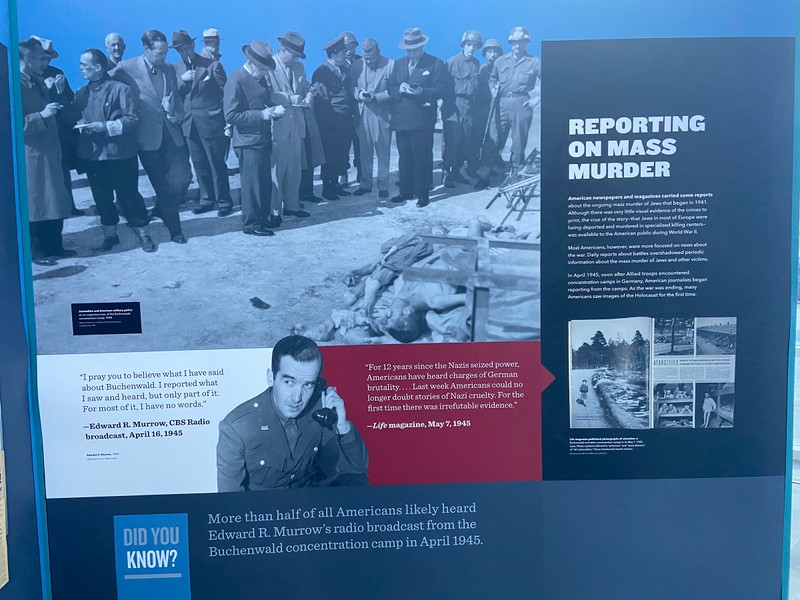Reporting on Mass Murder (Americans and the Holocaust)
Introduction
Author-Uploaded Audio
Reporting on Mass Murder (Americans and the Holocaust)
Text-to-speech Audio
During World War II, there were magazine and newspaper articles about the Nazi plan to murder the Jews—particularly after Americans learned of that plan in November 1942, which we’ll talk about later. But most newspapers made the war the main headline, since Americans were fighting and dying overseas. It wasn’t until the spring of 1945, as the war in Europe ended, that Americans saw photos and film of the liberation of concentration camps. Americans were shocked by the images they saw, such as these photographs printed in Life magazine in May 1945.
As the world struggled to understand what had happened, a new word, genocide, was needed for these crimes. Genocide is defined as crimes committed with the intent to destroy, in whole or in part, a national, ethnic, racial, or religious group.. On December 9, 1948, three years after the end of the Holocaust, the United Nations approved a written international agreement known as the Convention on the Prevention and Punishment of the Crime of Genocide. This convention established genocide as an international crime, which signatory nations “undertake to prevent and punish,” Preventing genocide, the other major obligation of the convention, remains a challenge that nations, institutions, and individuals continue to face.
Images
Reporting on Mass Murder panel (Americans and the Holocaust)

Backstory and Context
Text-to-speech Audio
Metropolitan Library System is one of 50 U.S. libraries selected to host AMERICANS AND THE HOLOCAUST, a traveling exhibition from the U.S. Holocaust Memorial Museum that examines the motives, pressures, and fears that shaped Americans’ responses to Nazism, war, and genocide in Europe during the 1930s and 1940s.
The Americans and the Holocaust exhibit will be on display at the Dowtown Library, along with a series of related special events from Thursday, January 5 to Sunday, February 12.
Based on extensive new research of that period, Americans and the Holocaust addresses important themes in American history, exploring the many factors — including the Great Depression, isolationism, xenophobia, racism, and antisemitism — that influenced decisions made by the U.S. government, the news media, organizations and individuals as they responded to Nazism. This exhibition will challenge the commonly held assumptions that Americans knew little and did nothing about the Nazi persecution and murder of Jews as the Holocaust unfolded.
Drawing on a remarkable collection of primary sources from the 1930s and ’40s, the exhibition focuses on the stories of individuals and groups of Americans who took action in response to Nazism. It will challenge visitors to consider the responsibilities and obstacles faced by individuals — from Franklin Delano Roosevelt to ordinary Americans — who made difficult choices, sought to effect change, and, in a few cases, took significant risks to help victims of Nazism even as rescue never became a government priority.
Americans and the Holocaust was made possible by the generous support of lead sponsor Jeannie & Jonathan Lavine. Additional major funding was provided by the Bildners — Joan & Allen z”l, Elisa Spungen & Rob, Nancy & Jim; and Jane and Daniel Och. The Museum's exhibitions are also supported by the Lester Robbins and Sheila Johnson Robbins Traveling and Special Exhibitions Fund, established in 1990.
Sources
United States Holocaust Memorial Museum. Accessed January 5th, 2023. https://www.ushmm.org/.
American Library Association. Accessed January 5th, 2023. https://www.ala.org/.
